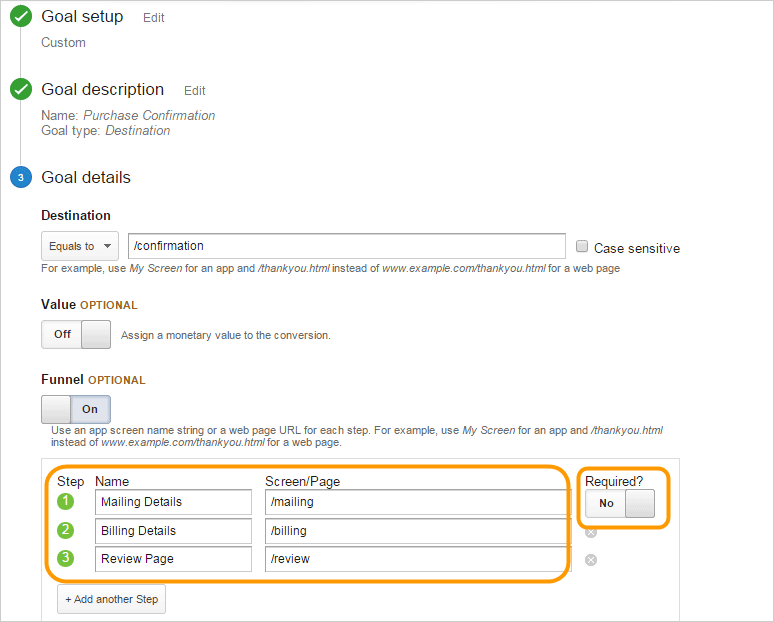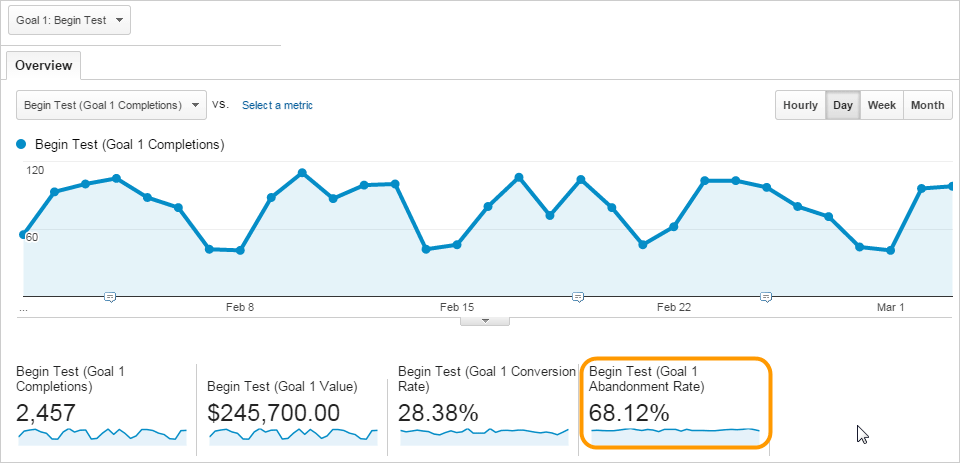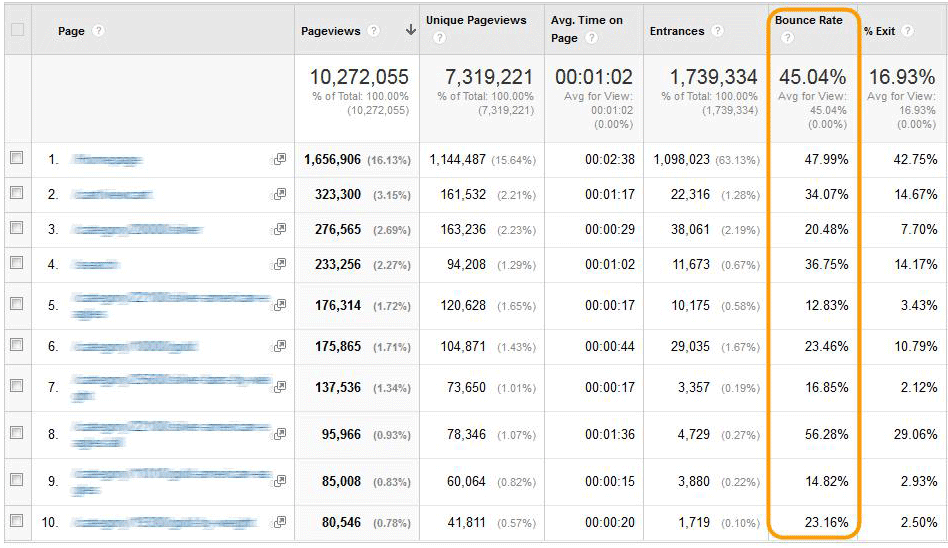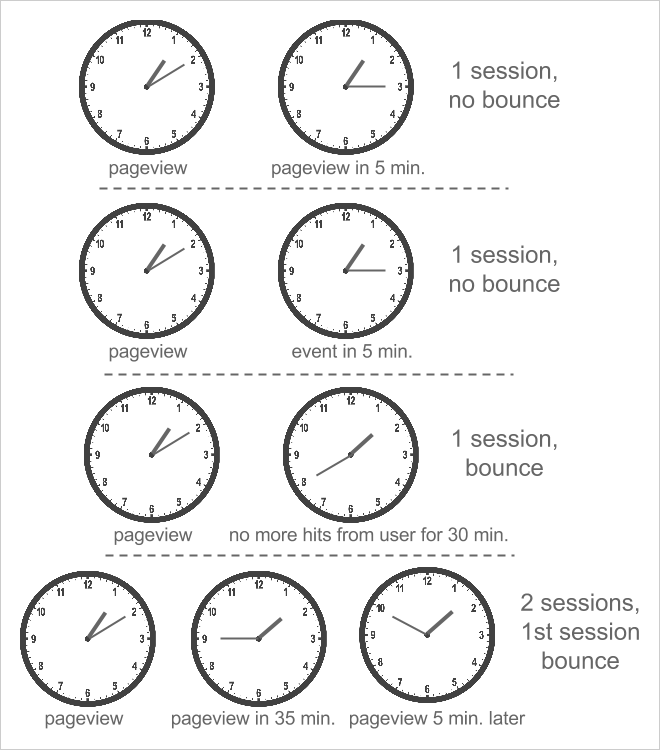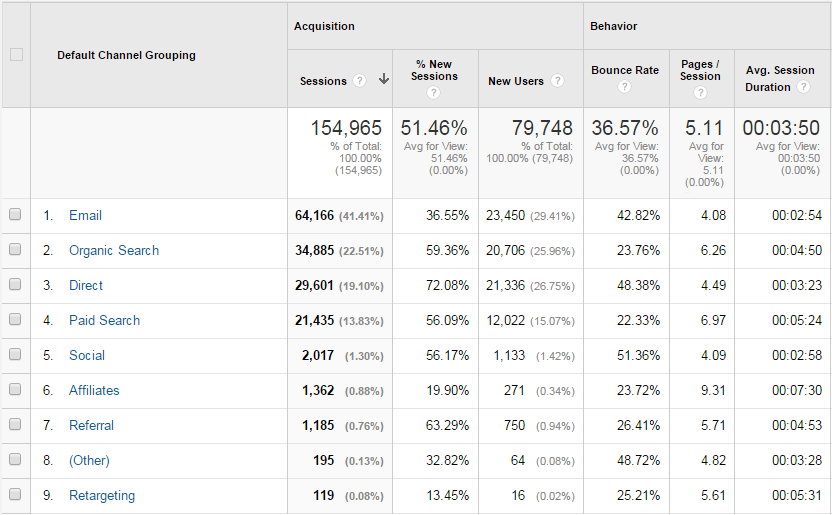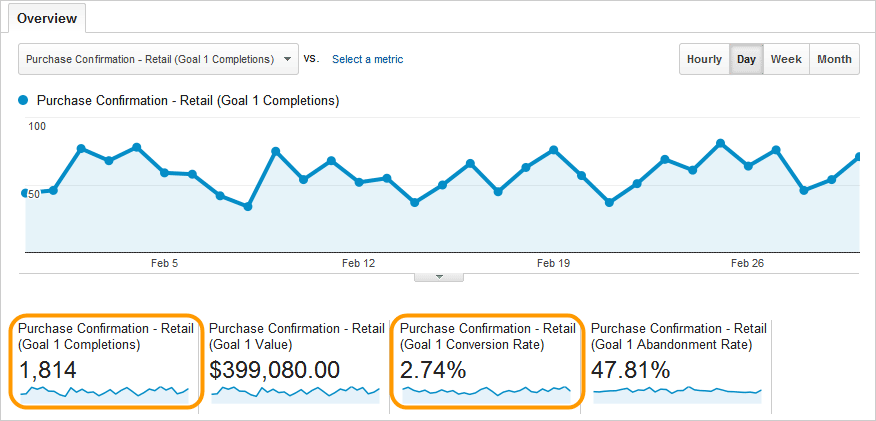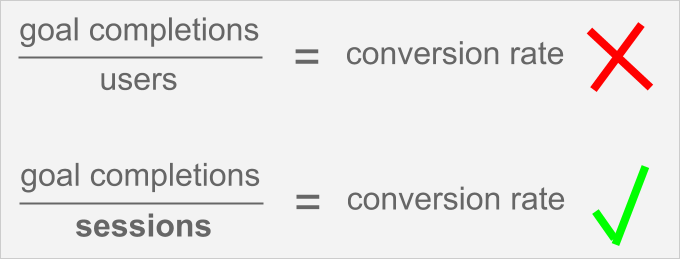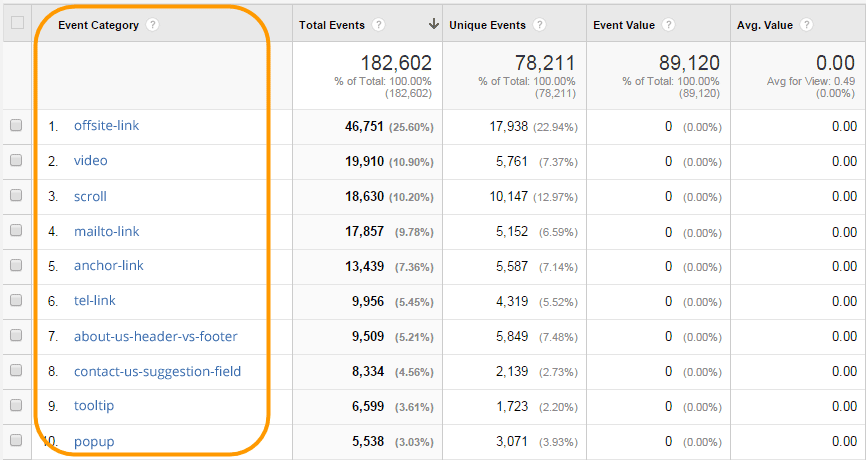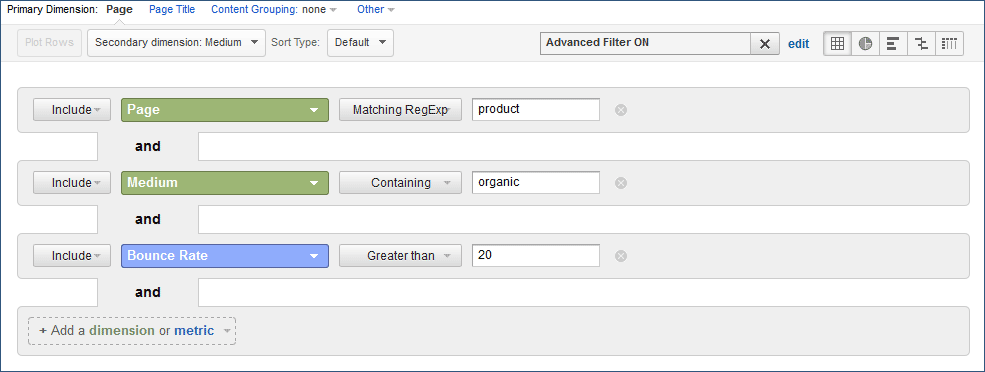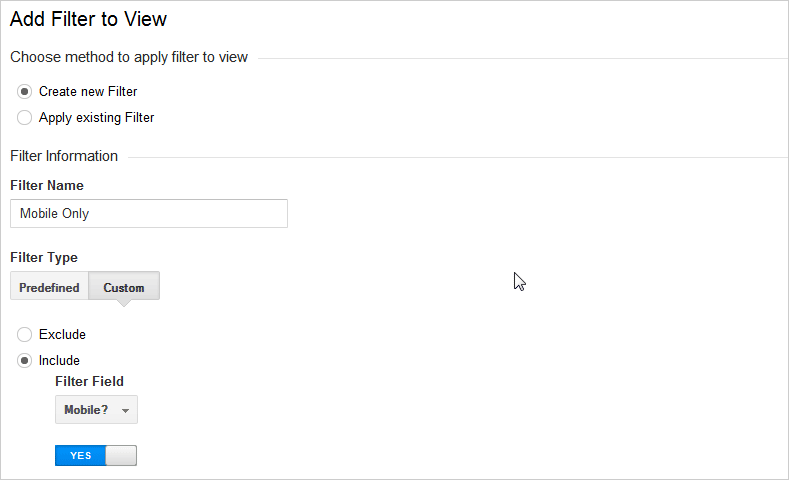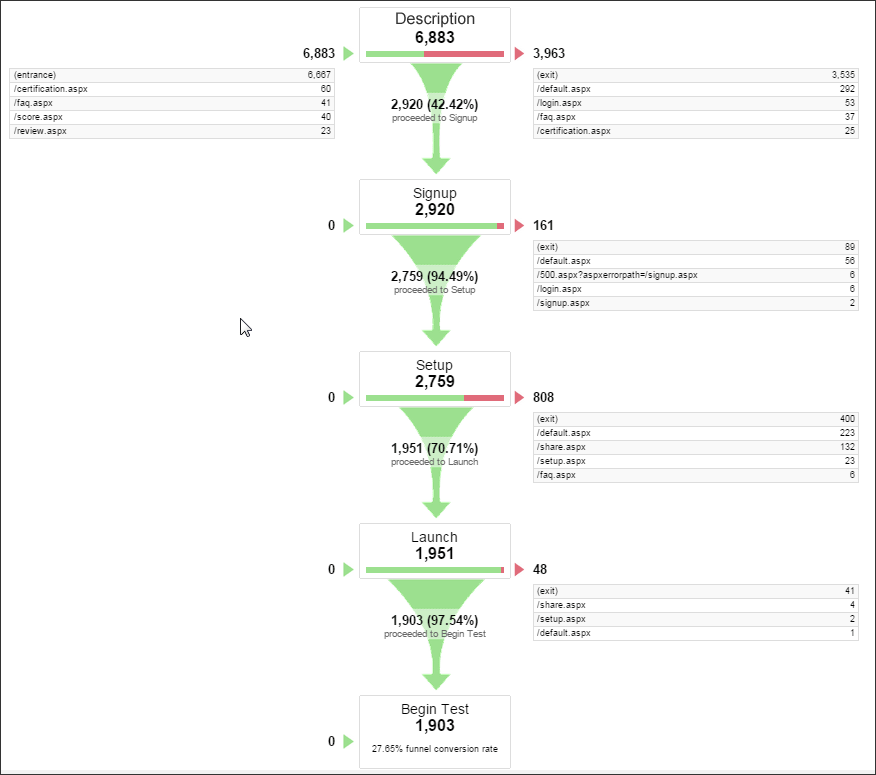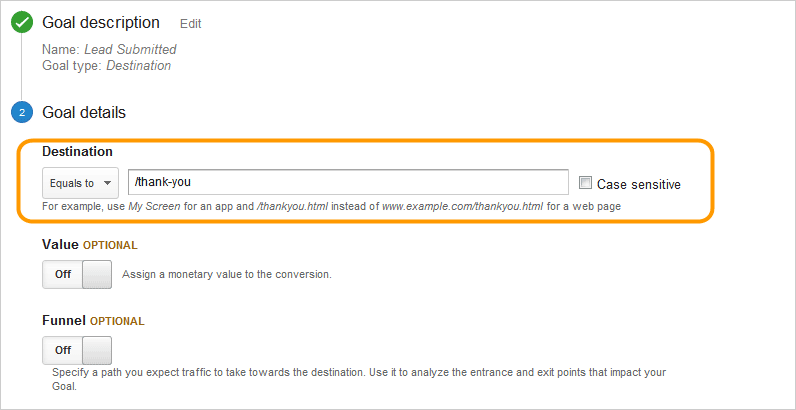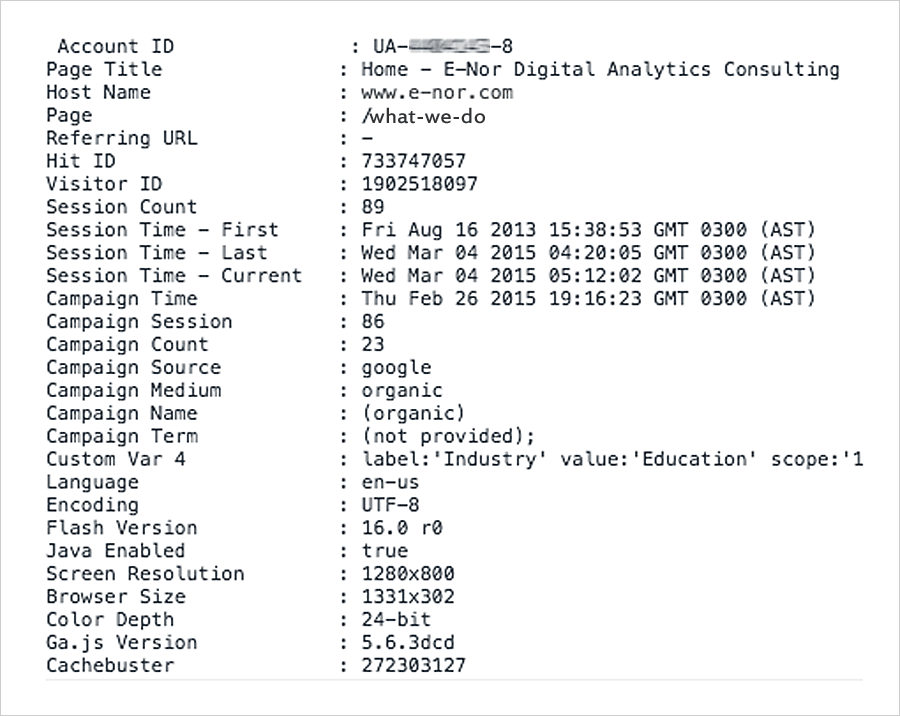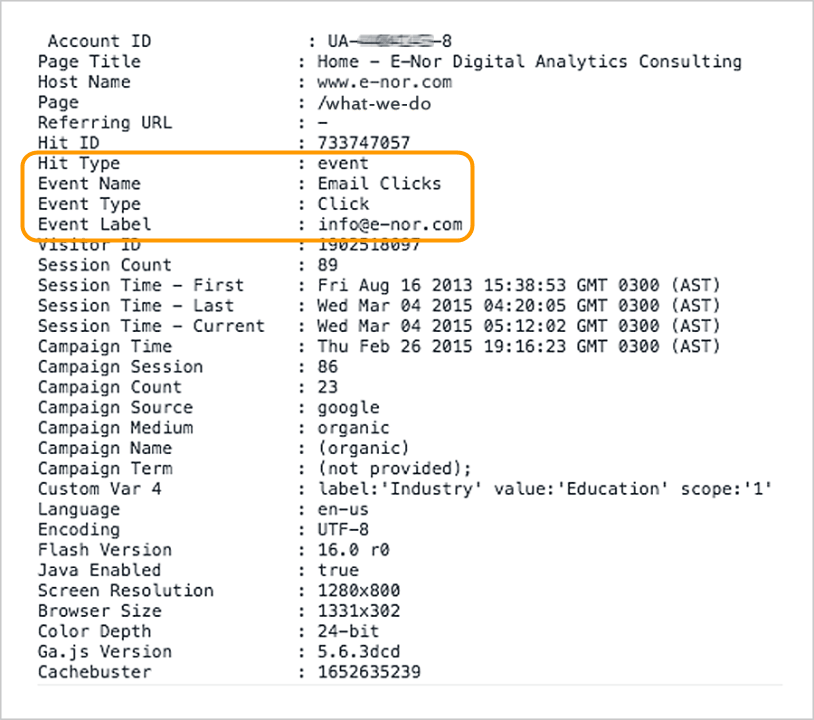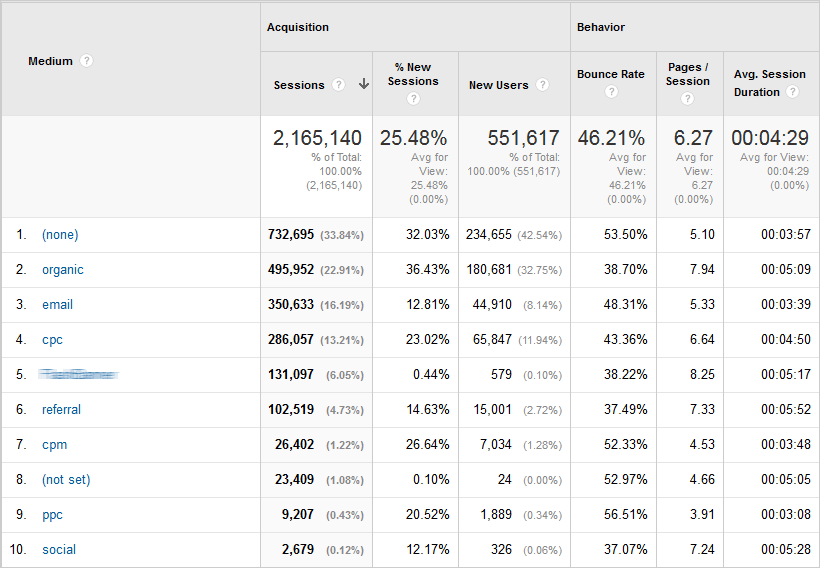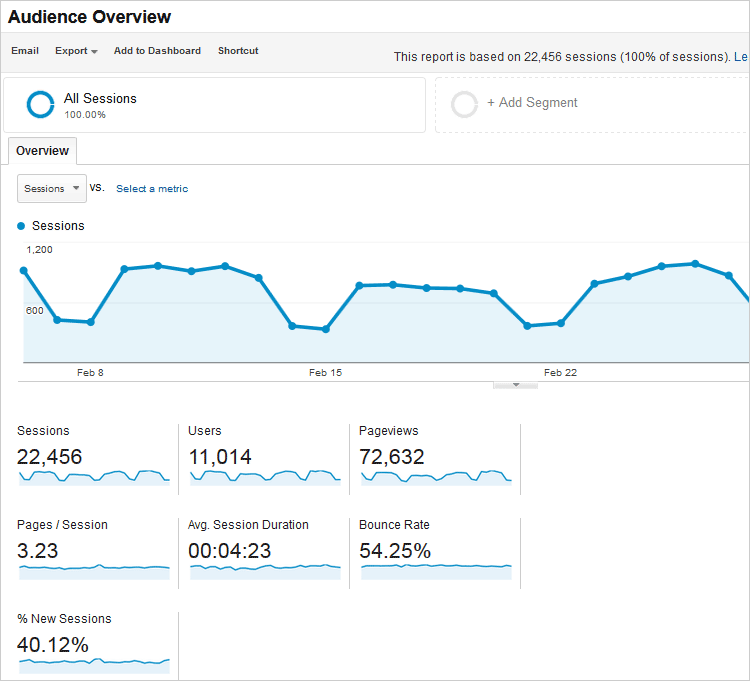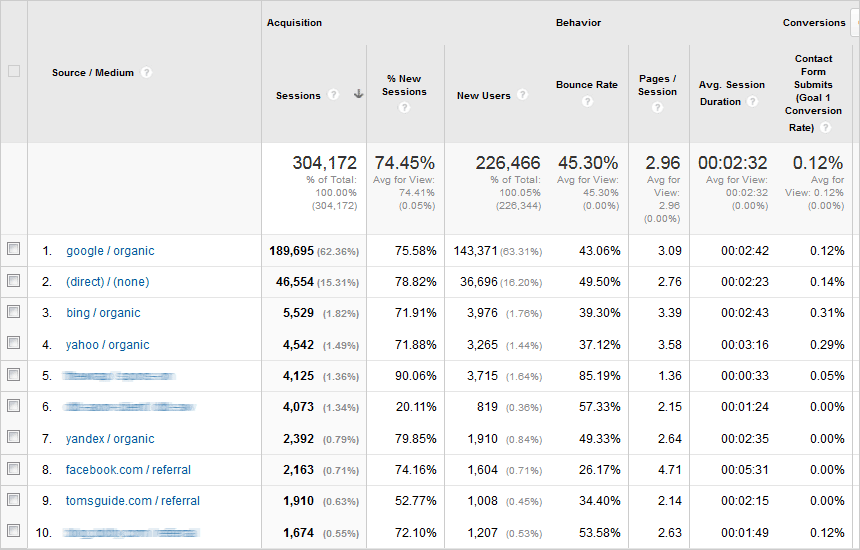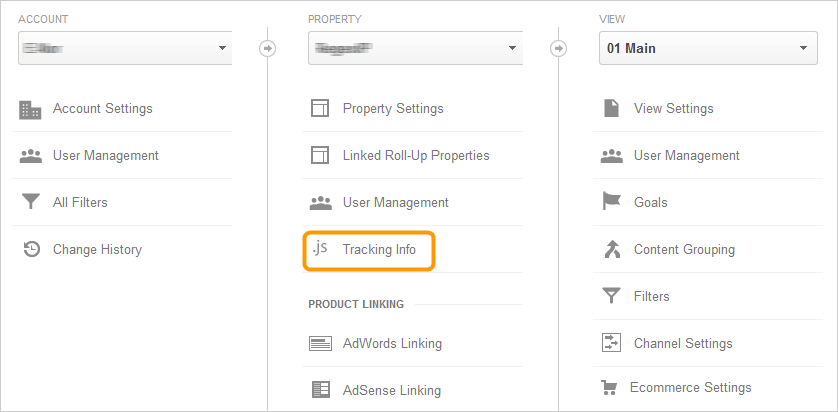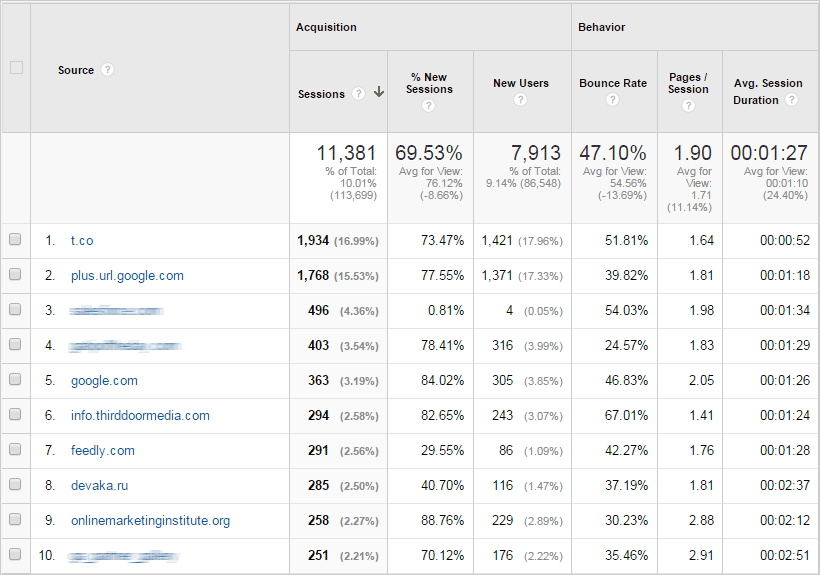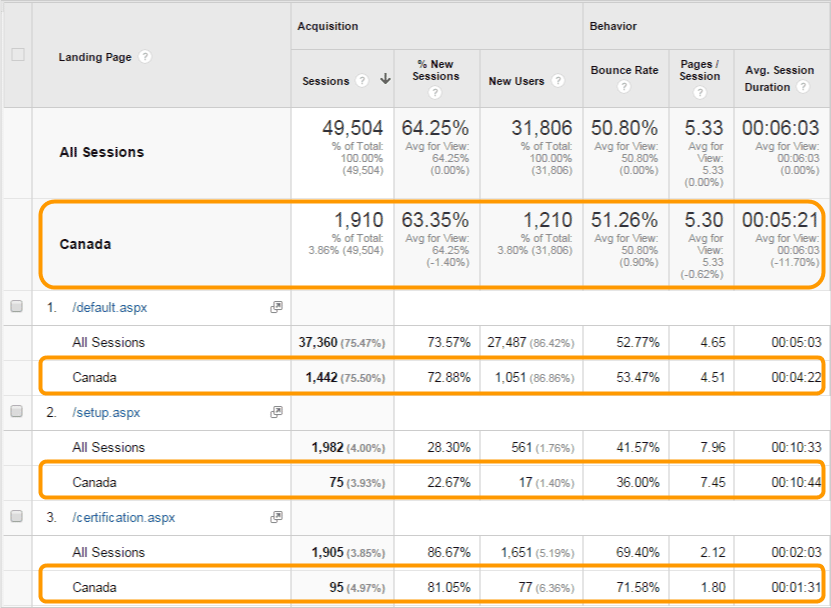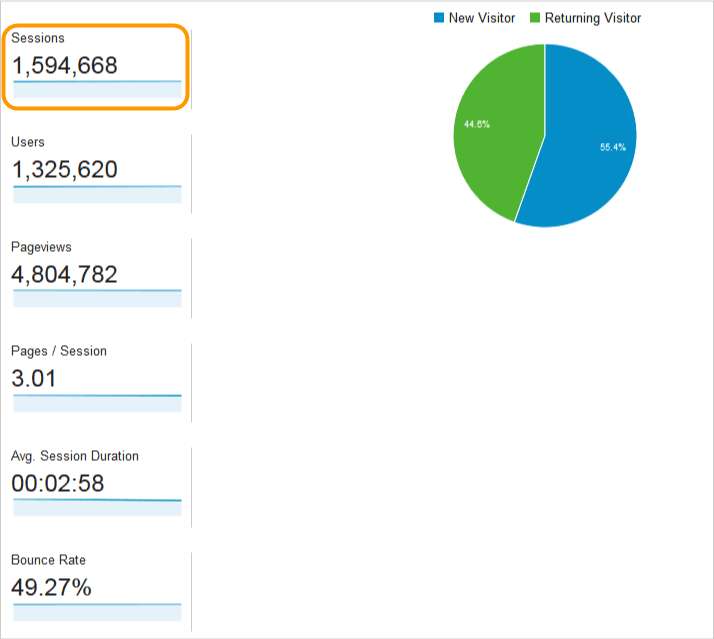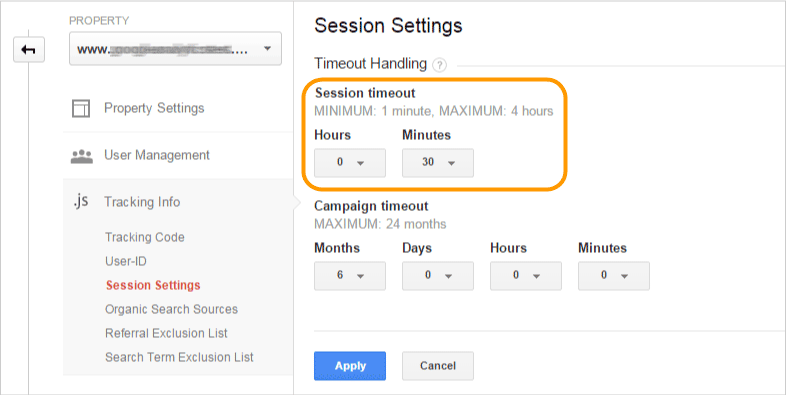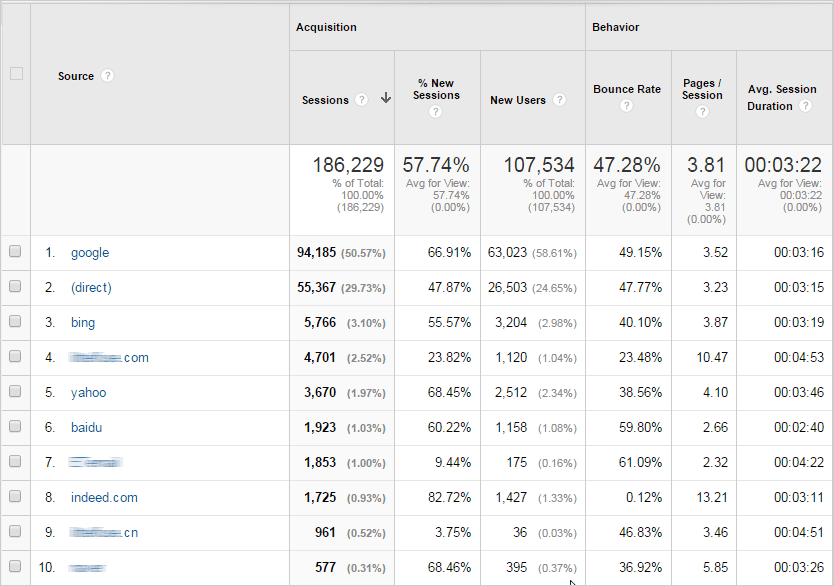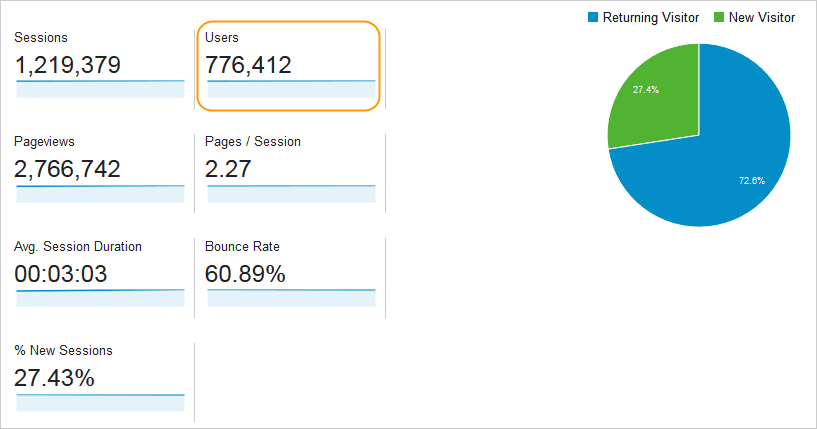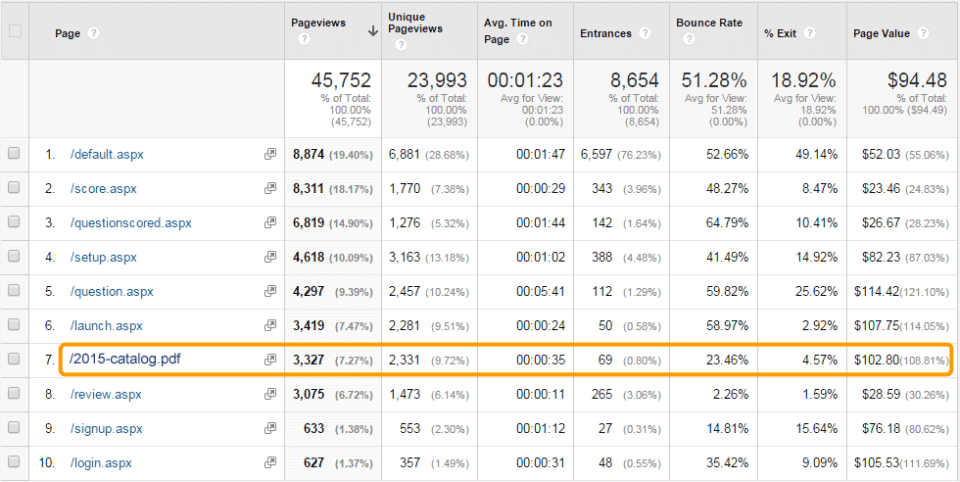[et_pb_section bb_built=”1″ admin_label=”section”][et_pb_row admin_label=”row” background_position=”top_left” background_repeat=”repeat” background_size=”initial”][et_pb_column type=”4_4″][et_pb_text admin_label=”Text” _builder_version=”3.0.50″ background_layout=”light” text_orientation=”left” border_style=”solid”]
Let’s get back to basics with a visual guide to core concepts and terminology in Google Analytics.
Click on one of the following terms to see the definition.
[/et_pb_text][et_pb_accordion admin_label=”Accordion” _builder_version=”3.0.50″ border_style=”solid” toggle_font=”|on|||” toggle_font_size=”18″]
[et_pb_accordion_item title=”abandonment”]
In Google Analytics, abandonment rate specifically represents the percentage of sessions in which the user entered your specified goal funnel but did not follow through to the goal destination.
Abandonment rate and bounce rate are not directly related as metrics.
For the Funnel Visualization report and abandonment rate calculation, you can configure a funnel to consider entries at any step or (as below) at the first step only.
Representing the percentage of sessions in which a funnel entry did not lead to a goal completion, abandonment rate appears in the Goals Overview report.
Related term: funnel
[/et_pb_accordion_item][et_pb_accordion_item title=”bounce”]
Bounce is commonly defined as a single-page visit. A somewhat better definition would be a single-hit session, since 1) a single pageview followed by a single tracked event would not be considered a bounce*, and 2) session is not used instead of visit to denote the 30-minute** hit timeout.
While bounce rate is a negative indicator for most types of landing pages, some level of bounce is always to be expected, especially if your website model is more informational than transactional.
* An event coded as non-interaction would not affect bounce rate.
**You can change the default 30-minute session timeout in the property admin.
Bounce rate represents the percentage of single-hit sessions.
In calculating bounce rate, Google Analytics considers session timeout and all hit types (not just pageviews).
Related terms: hit, session
Learn more:
Google Analytics Academy, Digital Analytics Fundamentals: Key Metrics and Dimensions Defined
[/et_pb_accordion_item][et_pb_accordion_item title=”campaign”]
If you configure inbound links with the utm_medium, utm_source, and utm_campaign parameters (also referred to as campaign tags) as in the example below, clickthroughs will appear in the Campaigns reports and will also be classified in the Channels report according to the medium and source value that you provide. No other configuration is required for campaigns.
utm_medium=email&utm_source= main-list&utm_campaign=20150226-newsletter
Campaigns are critical for helping Google Analytics to attribute traffic precisely and accurately so you can understand and optimize performance of traffic sources that might otherwise be recorded with more general or ambiguous source and medium values. As two examples, without campaign parameters, clickthroughs from email clients such as Outlook or the Gmail App would appear by default under the Direct channel, and clickthroughs from a banner retargeting campaign could be fragmented among countless referrers.
Clickthroughs on campaign-tagged URLs populate the Campaigns report, which allows you to closely track performance of email, social, and banner campaigns as well as other traffic sources, such as clickthroughs from PDFs and apps.
Related terms: medium, source
Learn more:
Google Analytics Academy, Digital Analytics Fundamentals: Acquisition Reports
E-Nor blog: Tracking Online and Offline Marketing Campaigns with Google Analytics
[/et_pb_accordion_item][et_pb_accordion_item title=”channel”]
Channels are high-level groupings of traffic based on the medium and source values that Google Analytics records for each session.
Google Analytics defines eight channels within the Default Channel Grouping. You can customize the Default Channel Grouping to include customized channels, and you can also create alternate channel groupings to swap out with the Default Channel Grouping.
By default, Google Analytics buckets your sessions into as many as eight default channels. You can also create your own channels, such as Affiliates and Retargeting below.
Related terms: medium, source
Learn more:
Google Analytics help pages, Default Channel Definitions
Google Analytics Academy, Digital Analytics Fundamentals: Acquisition Reports
E-Nor blog: Understanding Google Analytics Channel Definitions
[/et_pb_accordion_item][et_pb_accordion_item title=”conversion”]
A conversion is a completion of any goal that you have set up in Google Analytics, and the conversion rate represents the percentage of sessions during which the conversion occurred. Note the emphasis on sessions: conversion rate is based on sessions and therefore appears lower than if it were based on users.
Conversion rate is thus synonymous with goal completion rate on a per-session basis. Each user can convert only one time per goal per session. You can view conversion metrics for all goals in the view or any individual goal.
The percentage of sessions that include an Ecommerce transaction is represented specifically as the Ecommerce conversion rate.
Conversion rate represents the percentage of sessions during which a goal completion occurred.
Conversion rate is based on sessions, not users.
Related term: goal
Learn more:
Google Analytics Academy, Digital Analytics Fundamentals: Navigating Conversions Reports
[/et_pb_accordion_item][et_pb_accordion_item title=”dimension”]
Each Google Analytics hit (such as a pageview or an event) is recorded with multiple descriptors, or dimensions, relating to the user (e.g., new or returning), session (e.g., source and medium), and action (e.g., page name or event category).
In each Google Analytics table, metrics are reported against the values that appear in left column as the primary dimension. Different dimensions can serve as primary dimensions in different reports, such as page title in the Pages report and screen resolution in the Browser & OS report.
City selected as the primary dimension in the Location report.
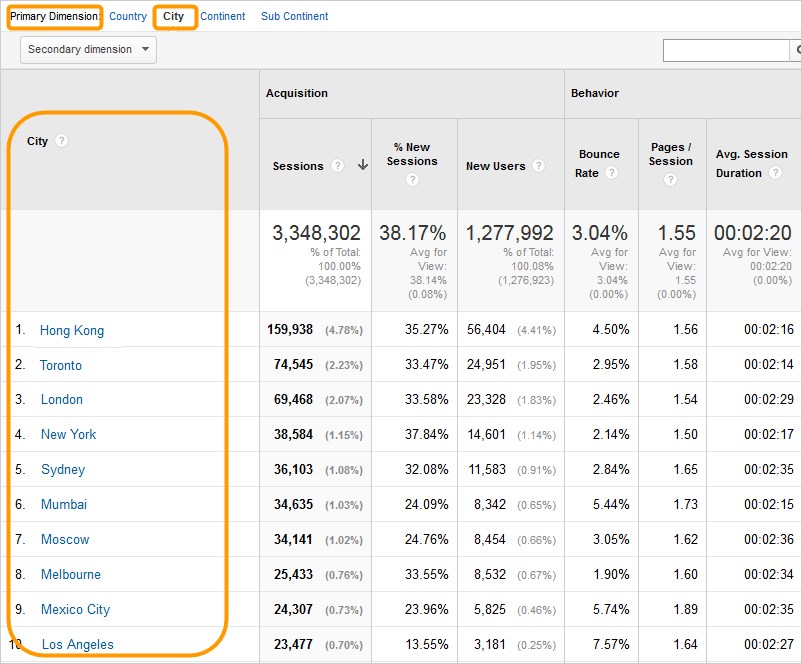
Learn more:
Google Analytics help pages: Dimensions and Metrics
Google Analytics Academy, Digital Analytics Fundamentals: Key Metrics and Dimensions Defined
Related term: filter (table filter)
[/et_pb_accordion_item][et_pb_accordion_item title=”event”]
Events can represent a wide range of user actions – such as scrolling, clicking an offsite link, or playing a video – that do not cause a page load and do not therefore generate a Google Analytics hit by default. For any event data to appear in your Google Analytics reports, you must explicitly code or configure events as part of your Google Analytics implementation. You can also use events in app tracking as a supplement to screen views.
To record an event, you must specify an event category and an event action as parameters. Event label is not obligatory but used frequently in event generation. It is not required that the event category, action, and label correspond with actual categories, actions, and labels in a strict sense. Instead, you can think of category, action, and label as a general-to-specific hierarchy for describing your events.
Events and virtual pageviews serve a similar purpose: to capture user actions that do not cause physical page loads in the browser.
For generating an event, event category and event action are obligatory, and event label is also specified many event calls.
You can view event metrics according to the event category, action, and label hierarchy that you provide.
Related term: bounce, hit, virtual pageview
Learn more:
Google Analytics help pages: About Events
[/et_pb_accordion_item][et_pb_accordion_item title=”filter (table filter)”]
The default table filter field allows you to filter by primary dimension value. The advanced filter option allows you to filter by primary dimension, secondary dimension, or metric.
Table filters are dynamic and do not permanently alter the underlying view data.
The basic table filter applies to the primary dimension values.
An advanced table filter allows you to filter by primary dimension, secondary dimension (if one is applied to the table), and metrics.
Related term: dimension
[/et_pb_accordion_item][et_pb_accordion_item title=”filter (view filter)”]
A view filter is used to exclude or rewrite raw property data before it appears in the view. View filters are similar in function to many of the options that appear in the View Settings panel in that they modify the unfiltered tracking feed into the final form represented within the view.
A Google Analytics user with Edit access at the view level can apply view filters and settings. For as long as they’re applied, view filters and settings permanently alter the data captured in the view.
This filter will allow only mobile traffic to be recorded in the view.
Related terms: property, view
Learn more:
Google Analytics Academy, Digital Analytics Fundamentals: Setting Up Basic Filters
E-Nor blog: Best Practices for Filters in Google Analytics
[/et_pb_accordion_item][et_pb_accordion_item title=”funnel”]
As part of a destination goal, you can configure a funnel to identify drop-off points in the designed conversion path.
A few notes about funnels:
- Completion of the funnel steps does not affect overall goal conversion rate. A goal completion counts even if the user avoided any or all funnel steps before accessing the goal destination URL.
- Goal abandonment rate is based solely on funnel completion.
- You can configure a goal to record entries only at the first step or at any step.
You can configure a funnel during setup of a destination goal.
Related terms: abandonment, goal
Learn more:
Google Analytics Academy, Digital Analytics Fundamentals: Setting Up Goals and Ecommerce
[/et_pb_accordion_item][et_pb_accordion_item title=”goal”]
A goal is a specific user action or a level of user engagement that you define as indicating a successful session. No goals are configured by default; a Google Analytics user with Edit rights to the view must configure at least one goal for Google Analytics to be able to calculate metrics such as conversion rate and goal completions.
Most goals are defined as a pageview at the end of a specific process as below, but you can also set up goals based on event completion, session duration, or pages/screens per session. The latter two goal types are referred to as engagement goals, as they signify a threshold of user engagement rather than a specific action.
Destination is the most common goal type.
Related terms: conversion, funnel
Learn more:
Google Analytics Academy, Digital Analytics Fundamentals: Setting Up Goals and Ecommerce
[/et_pb_accordion_item][et_pb_accordion_item title=”hit”]
When the Google Analytics tracking code executes as a page loads, it records dimension values not only about the page itself, but also about the environment (e.g., browser language setting) and the session (e.g., session count). This entire packet of dimensions values is referred to a hit.
Besides the pageview hit type that the default Google Analytics tracking code executes, you can also send event, virtual pageview, Ecommerce, and social hits to Google Analytics.
The GA Debug extension for Chrome reveals the many dimensions included in a pageview hit.
The event hit type includes additional dimension values: event category, event action, and often event label.
Related terms: bounce, event, virtual pageview
Learn more:
Analytics Talk blog: Hits, Sessions & Users: Understanding Digital Analytics Data
[/et_pb_accordion_item][et_pb_accordion_item title=”medium”]
Medium is the most general data dimension related to traffic source attribution that Google Analytics records. The three default values for medium are organic for search engine traffic, referral for non-search engine clickthroughs, and (none) for direct access. By default, the source dimension value recorded for each session is more specific than the medium value.
Although Google Analytics records only three default medium values – organic, referral, and (none) – you can record other medium values by passing a utm_medium campaign parameter in an inbound link.
Related terms: campaign, channel, source
Learn more:
Google Analytics help pages: Traffic Source Dimensions
[/et_pb_accordion_item][et_pb_accordion_item title=”metric”]
Metrics are the numeric totals, percentages, and ratios that appear in Google Analytics. In an overview report, the metrics are displayed for the entire website or app (after view filters have been applied). In table reports, metrics are also broken down against each primary dimension value that appears in the leftmost column.
Metrics vary according the report type and report dimension. In the Pages report, where Page is the primary dimension, metrics include pageviews, bounce rate, and page value. In the Referral report, where source is the primary dimension, metrics include sessions, bounce rate, and pages/session.
In the overview reports, metrics are reported relative to all traffic in the view.
In the table reports, metrics are also reported against the primary dimensions listed in the first column.
Related term: metric
Learn more:
Google Analytics help pages: Dimensions and Metrics
[/et_pb_accordion_item][et_pb_accordion_item title=”profile”]
Profile is the previous name for view.
[/et_pb_accordion_item][et_pb_accordion_item title=”property”]
The property is level of the Google Analytics account structure into which raw tracking data flows. There can be one or more property in each account, and one or more views for each property.
Each property is associated with a specific property ID and usually corresponds to a single website or app. A single property can have one or more corresponding views.
Raw data from your website or app tracking flows into Google Analytics at the property level.
Related terms: filter (view filter), view
Learn more:
Google Analytics help pages: About Properties
[/et_pb_accordion_item][et_pb_accordion_item title=”referral”]
Google Analytics records the medium value of referral for clickthroughs from all other websites unless:
- Google Analytics recognizes the referring site as an organic search engine, or
- the inbound link contains campaign parameters that override the default medium and source capture
Sessions recorded with the referral medium are listed in the Referrals report.
By default, Google Analytics records clickthroughs from websites (other than search engines) with the referral medium.
Related terms: medium, source
[/et_pb_accordion_item][et_pb_accordion_item title=”segment”]
Segments allow Google Analytics users to dynamically segment reports based on session characteristics (such as device, browser type, geography, or source) or behavior (such as a pageview or an event).
All Google Analytics users, including those with only Read & Analyze rights, can create and apply segments. Unlike view filters, segments do not permanently alter underlying view data.
Segments formerly appeared in Google Analytics as advanced segments.
A segment defined for traffic from Canada applied to the Landing Pages report.
Related term: filter (view filter)
Learn more:
Google Analytics help pages: Build Segments
[/et_pb_accordion_item][et_pb_accordion_item title=”session”]
A session represents a series of hits for a single user with no interruptions longer than 30 minutes. A Google Analytics user can change the session timeout. A longer session timeout, for example, might be more suitable for a site that offers long-duration videos.
A session is intended to identify a single series of essentially uninterrupted activities by a single user.
If you have Edit access at the property level, you can change the session timeout from the default of 30 minutes.
Related term: user
Learn more:
Google Analytics help pages: How a Session Is Defined in Analytics
[/et_pb_accordion_item][et_pb_accordion_item title=”source”]
The source dimension represents the referring website or the utm_source campaign parameter included in an inbound link. For direct traffic, source is recorded as (direct).
Source is more specific than medium. For instance, an organic clickthrough from Google and Bing would be recorded respectively with google and bing as source but both with organic as medium.
Of the medium and source recorded for each session, source is more specific.
Related term: medium
Learn more:
Google Analytics help pages: Source/Medium
[/et_pb_accordion_item][et_pb_accordion_item title=”tracking code”]
The basic Google Analytics tracking code in the property admin screen. To generate pageview data, you include this tracking code on all pages of your website. If you’re using a tag management system, you deploy an equivalent Google Analytics tag in place of this native Google Analytics tracking code.
The Google Analytics tracking code is designed to generate pageview hits for each pageload.
Related terms: property, UA number
Learn more:
Google Analytics help pages: Set Up the Web Tracking Code
[/et_pb_accordion_item][et_pb_accordion_item title=”UA number”]
Also referred to as property ID or tracking ID, the UA number is unique identifier for each Google Analytics property. It is contained in the tracking code and sent to Google Analytics with each hit.
Related terms: property, tracking code
[/et_pb_accordion_item][et_pb_accordion_item title=”unique visitor”]
Unique visitor is the previous name for user.
[/et_pb_accordion_item][et_pb_accordion_item title=”user”]
A user is a unique individual who accesses website or app one or more times. For a website, an individual user is defined by the presence of the _ga cookie in the browser. Because one user can access a website or app multiple times in within the reporting period, the user count is lower than the session count in virtually all reporting.
Within the reporting period, a single user may have generated multiple sessions, so user count is almost always lower than session count.
Related term: session
[/et_pb_accordion_item][et_pb_accordion_item title=”view”]
A view represents the raw property data after any view filters ,view settings, goals, Ecommerce tracking, content groups, and custom channel groupings have been applied during processing. All Google Analytics reports are accessed at the view level.
You can use views to create filtered variations and subsets of the same unfiltered tracking data. The view limit per account is 50 for Google Analytics standard and 200 for Google Analytics Premium.
Using different view settings and filters, you can configure multiple views from a single property.
Related terms: filter (view filter), property
Learn more:
Google Analytics Academy, Digital Analytics Fundamentals: Understanding Your Account Structure
E-Nor blog: Best Practices for Views in Google Analytics
[/et_pb_accordion_item][et_pb_accordion_item title=”virtual pageview”]
Virtual pageviews are akin to events, in that you can use them to capture user actions that do not cause a page load and would therefore not execute the default tracking code or generate any data.
You can opt for either events or virtual pageviews to track important non-pageload user actions, but there are some significant differences.
- While events appear in dedicated reports, virtual pageviews appear directly in the Pages report (and are in fact treated exactly the same as physical pageviews generated by the default tracking code).
- You can provide several types information (including category, action, and label) for events, but you only provide the page name for a virtual pageview.
- You can use a virtual pageview as a funnel step, and as a goal destination on which you can build a funnel, but you cannot use events with goal funnels in any way.
As one example, you can configure a pdf link to generate a virtual pageview
Using different view settings and filters, you can configure multiple views from a single property.
Related terms: event, hit
Learn more:
E-Nor blog: To Pageview or Event…That Is the Question
[/et_pb_accordion_item][et_pb_accordion_item title=”visit”]
Visit is the previous name for session. The term session is more accurate than visit because a single physical visit can generate multiple sessions in Google Analytics if hits are spaced more than 30 minutes apart. (In practice, session and visit are used somewhat interchangeably.)
[/et_pb_accordion_item][et_pb_accordion_item title=”visitor”]
To avoid ambiguity, visitor is not used in the Google Analytics interface, since this term could be interpreted to mean either session or user.
[/et_pb_accordion_item]
[/et_pb_accordion][et_pb_text admin_label=”Text” _builder_version=”3.0.50″ background_layout=”light” text_orientation=”left” border_style=”solid” background_position=”top_left” background_repeat=”repeat” background_size=”initial”]
Have we missed any? Please post a comment below.
[/et_pb_text][/et_pb_column][/et_pb_row][/et_pb_section]
